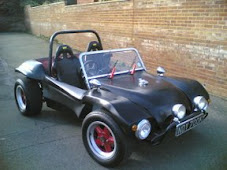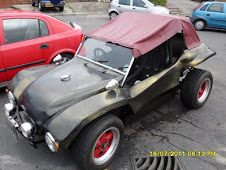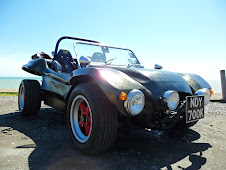 With the urgency of pulling the engine out now gone and the engine now sitting waiting to be rebuilt. I decided that I needed to get on with the IRS conversion that I had already started before I found the problem with the debris in the crankcase.
With the urgency of pulling the engine out now gone and the engine now sitting waiting to be rebuilt. I decided that I needed to get on with the IRS conversion that I had already started before I found the problem with the debris in the crankcase.I decided that I was going to renew most of all of the components on the A Arms. This meant I needed to purchase new bearings oil seals and other miscellaneous sundries.
I started with trying to locate the bearings, several telephone calls later I was wondering what's was happening to the parts industries. The only bearings that it seems that I could buy where the new type of needle bearings. This was annoying as I already new that roller bearings where much better and ran much smoother giving less drag and longer life.
The problem being that the needle bearings where made from small cylinders that run in a steel cage made from pressed steel. The ball bearings on the other hand had small spherical bearings in a cage made from several parts. The friction surfaces where much smaller and the tolerances in the bearing where much higher.

 Needle Bearings (above left) ............................... ,Ball Bearings (above right).
Needle Bearings (above left) ............................... ,Ball Bearings (above right).In the pictures above you can clearly see the differences in the two bearing designs and why the ball bearing or ball race provides less friction and better wear.
After discussing this problem with come friends I found out that you could purchase bearings from a bearing company and that they would usually measure your existing bearings and come up with a match. I found a company called Kent Bearings in Hastings East Sussex. They provided me with the correct size bearings. Interestingly enough the two bearings sizes where the same. This was interesting as most car suppliers supplied the rear set of bearings at a higher cost?
 I bought the bearings and bought some Castrol LM bearing grease. I found that the oil seals came in a kit for the cars with swing angle and not for IRS. On closer examination the parts in this kit where exactly the same as the parts that could be sourced separately for the IRS.
I bought the bearings and bought some Castrol LM bearing grease. I found that the oil seals came in a kit for the cars with swing angle and not for IRS. On closer examination the parts in this kit where exactly the same as the parts that could be sourced separately for the IRS.The Axles are assembled from the back bearing. This is inserted first, then then the circlip and then the oil seal. All of these items need to be greased with the LM lube before they where assembled. Once these components where set in place the inner spacer (The spacer with the concave side was placed into the oil seal with the concave side facing the outside. The axle was thoroughly greased and then knocked into the A-Frame with a wooden mallet. 6oz of LM grease is then packed into the front of the A-Arm cavity. The inner spacer can then be lubricated and slid onto the axle. Once all this has been done you are ready to insert the outer bearing. This is slightly harder to achieve as you need piece of tubing the size of the outside bearing casing and about 250cm long. You can slide this over the axle and then knock the lubricated outer bearing into its place. The oil seal can then be seated over the bearing and the external spacer can be set on the axle and slid into the oil seal.
This process leaves you with the axles correctly installed in the A-Arm. You can add the cover plates at this point but I wanted to get hold of some calliper brackets before I placed them firmly in place.
Parts.
Grease: Castrol LM Lithium grease
Ball Bearings:
FAG 6206.c3 15010719






















Every XJ6/12 Jaguar has corrosion in this area due to faulty construction and dynamic stresses coming from the IRS.
ReplyDeleteI became aware of the need of a bigger renovation when rain water started to collect inside the car in the back seat sink! The drainage tube was clogged and there was a hole to the wheel arch. This is typical to the XJ Coupe models right?